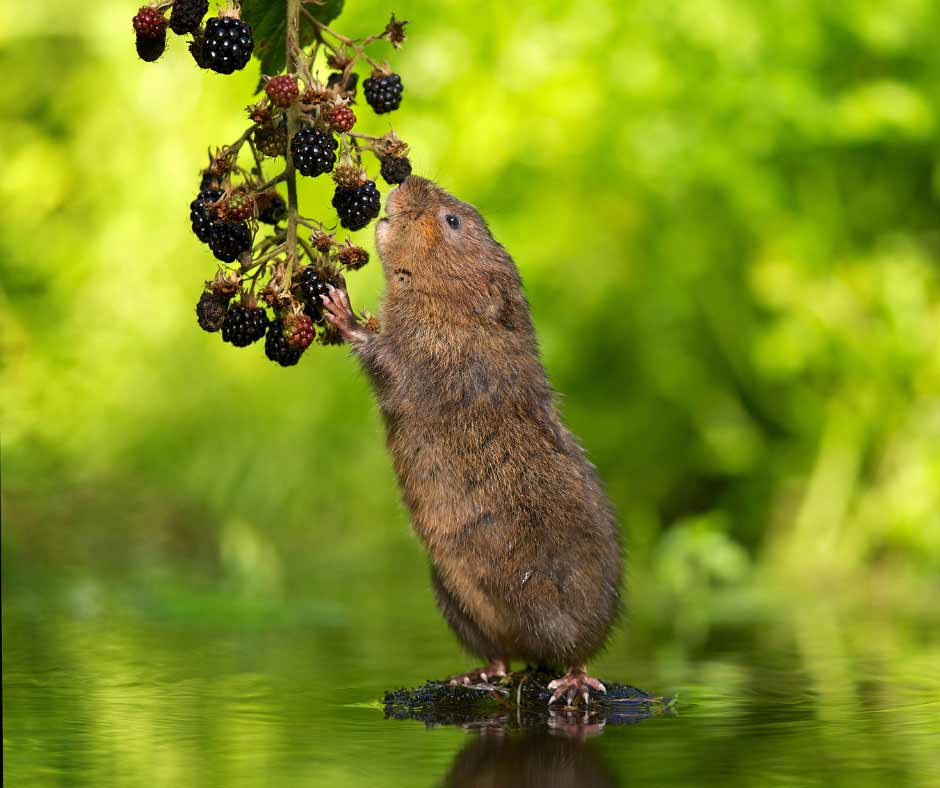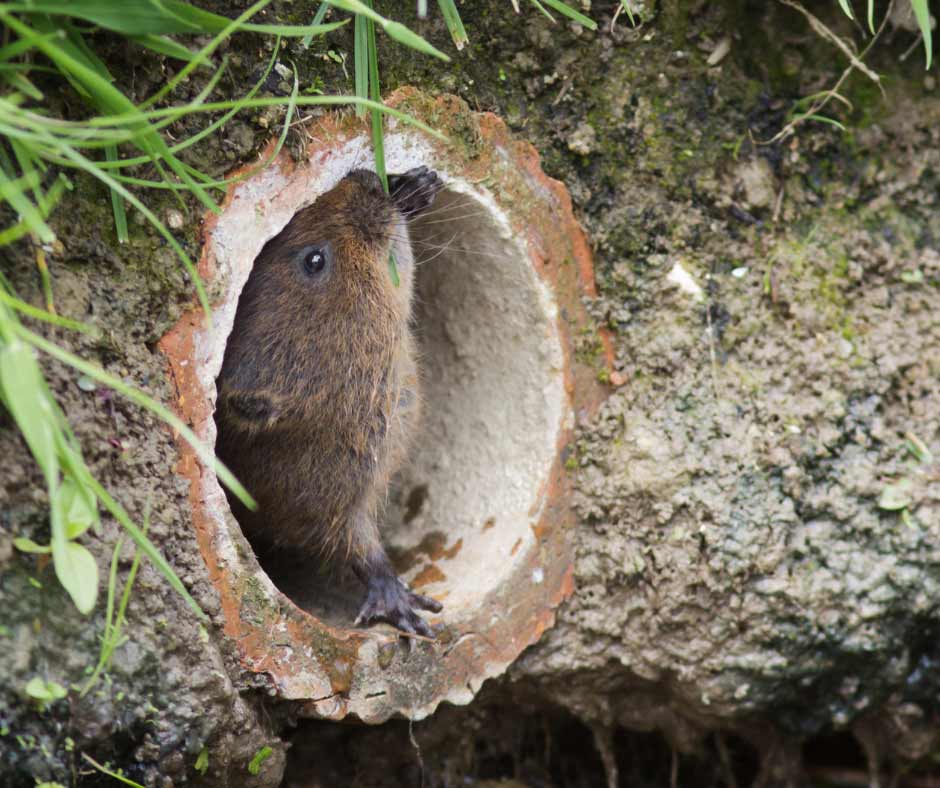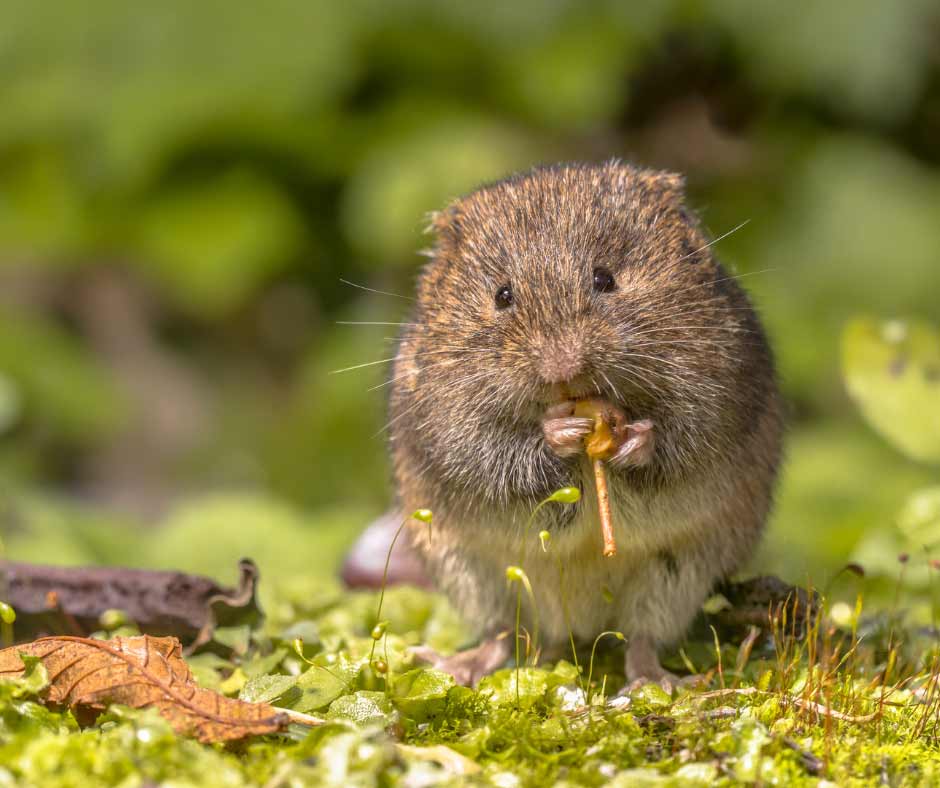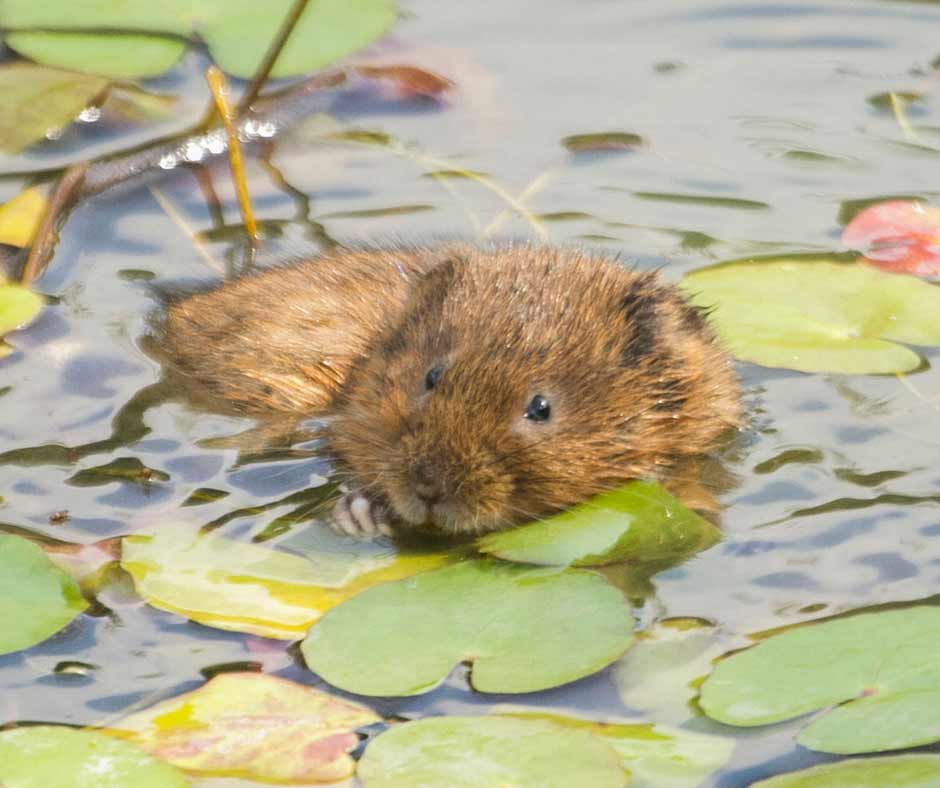Water Vole
Arvicola amphibius
Life History
Length: 14 -22 cm
Tail: 9.5-14cm
Weight: 150-300g
Diet: Grasses and waterside plants, as well as twigs, bulbs, roots and fallen fruit
Average lifespan: 6months to 1.5 years
Best time to see them: April to September
UK population: Estimated to be between 58,341 and 186,142
UK conservation status: Red

About
The water vole (Arvicola amphibius), often mistaken for a brown rat, is a small, semi-aquatic rodent native to the UK and parts of Europe and Asia. It has a chubby face, small rounded ears, and a blunt nose, with a furry tail and rich brown fur that covers its entire body. Water voles typically grow up to 20 cm long, with a tail measuring about half that length. They are most commonly found along slow-moving rivers, streams, ditches, and wetlands, where they dig burrows into the banks for shelter and breeding. Once widespread across the UK, their populations have dramatically declined due to habitat loss, pollution, and predation by the invasive American mink. Conservation efforts are now underway to restore suitable habitats and support the recovery of this important species.
Behaviour
Water voles are mostly herbivorous and spend much of their time feeding on a variety of riverside vegetation, including grasses, reeds, and roots. They are active during the day, particularly at dawn and dusk, and are strong swimmers, often seen diving into the water to escape predators. Water voles are territorial animals, marking their range with scent glands and latrines to communicate with others. They build extensive burrow systems in riverbanks, with chambers for nesting and food storage. Breeding usually occurs from March to late summer, and females can raise several litters a year. Despite their shy nature, water voles play a vital role in the ecosystem by maintaining healthy bankside vegetation and supporting biodiversity.


Their Threats
Water voles face a range of serious threats that have caused dramatic population declines in recent decades. One of the most significant is predation by the non-native American mink, introduced to the UK in the 20th century, which can easily access vole burrows and prey on both adults and young. Habitat loss is another major issue, as the destruction or degradation of riverbanks through urban development, agriculture, and pollution reduces the availability of suitable shelter and food. Additionally, poorly managed waterways and excessive vegetation clearance disrupt their environment and make them more vulnerable to predators. Climate change and extreme weather events, such as flooding or drought, can also impact breeding success and food supply. Conservation efforts now focus on restoring habitats, controlling mink populations, and monitoring vole numbers to help protect this endangered species.
How you can help
- Protect and restore natural waterways by supporting efforts to maintain healthy rivers, streams, and wetlands with native vegetation and undisturbed banks.
- Create vole-friendly habitats in gardens or on land near water by planting native plants and avoiding hard landscaping along the water’s edge.
- Avoid using pesticides and herbicides near water sources, as these can harm water voles directly or damage their food supply and habitat.
- Support wildlife conservation groups working to protect water voles by volunteering, donating, or raising awareness.
- Report sightings of water voles or invasive species like mink to local conservation organisations to assist with monitoring and protection efforts.
